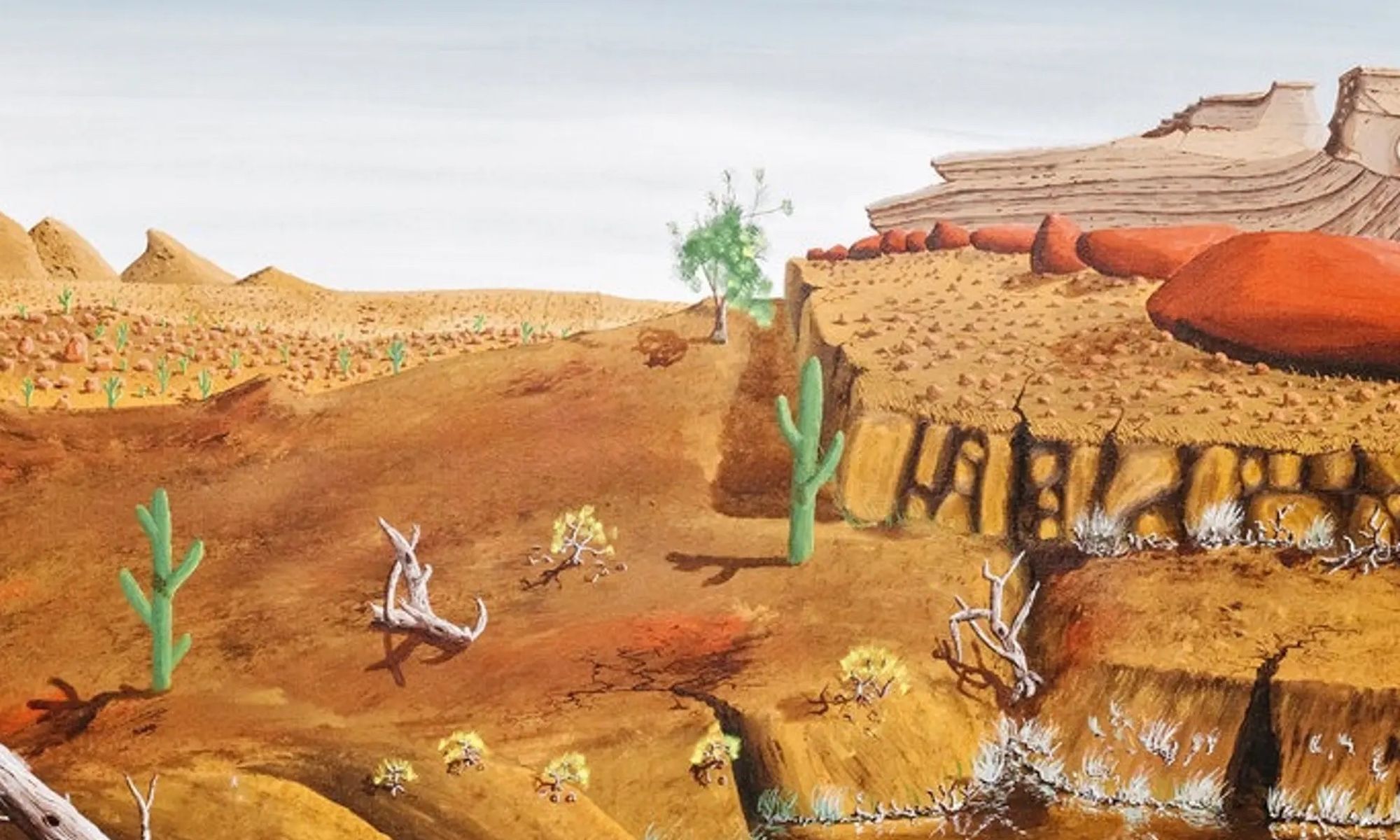The disputed painting signed "Pete Doige" Court documents
The artist Peter Doig has been awarded $2.5m in a decade-long legal saga over a disputed desert landscape painting. In 2013, a former prison corrections officer named Robert Fletcher and the Chicago gallerist Peter Bartlow sued Doig, claiming that a painting in Fletcher’s possession was a valuable early work that the artist had made while in prison in 1976 but subsequently disowned, therefore diminishing its art market value.
The work was signed “Pete Doige ‘76”—note the misspelling of the last name—and was painted by an inmate at Thunder Bay Correctional Center, the prison in Ontario, Canada where Fletcher worked. Fletcher later purchased it from the inmate for $100 and, in 2011, a friend noticed the signature and tipped Fletcher off to the possibility of the work being by Peter Doig. With this idea in mind, Fletcher approached Bartlow for help selling the painting. He also requested an auction estimate from Sotheby’s, which expressed interest in the work.
Fletcher and Bartlow contacted Doig through multiple channels, but when the artist denied having made the painting or having been incarcerated in the Thunder Bay Correctional Center, Fletcher argued that his disavowal was due to a personal vendetta, and initiated the $5m lawsuit to authenticate the work.
The defendants sourced documents demonstrating the high unlikelihood of Doig being incarcerated at the time, including school records and personal correspondences. Canadian police were unable to find anyone with Doig’s name and birthday who had a criminal record.
In 2013, the defendants tracked down a woman named Marilyn Doige Bovard who confirmed that she had a brother named Pete Doige who had been incarcerated in the Ontario prison in the 1970s and had been a painter, though he had died in 2012. According to the most recent legal filing, Bovard even “asserted that the desert scene [the painting] depicted resembled an area in Arizona where her and Doige’s mother had lived after divorcing their father”. She also provided documentation including her brother's student identification, driver’s licence and carpenter union membership card, but the plaintiffs pressed on with the case.
In 2016, Chicago judge Gary Feinerman ruled that Doig “absolutely did not paint” the disputed work. After the ruling, Doig moved for sanctions against the plaintiffs, and last month Feinerman ruled in support of $2.5m in sanctions, stating that by mid-2014, “it should have become indisputably clear to Plaintiffs and [their counsel] that their claims stood no chance of success and, in fact, that the claims were factually meritless”.
Doig’s lawyer said in a statement that any money the artist would receive as a result of this ruling would be donated to a nonprofit that gives incarcerated people opportunities to make art. Bartlow, the Chicago gallerist, in turn told The New York Times that he still believed Doig to be the work’s author, and that he was considering an appeal “or other options”.

